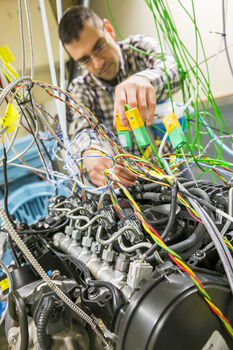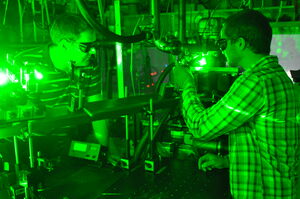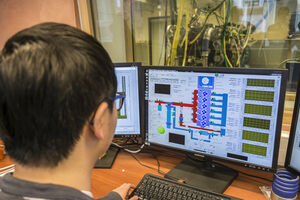Research

The division's research is carried out in a modern engine laboratory, inaugurated in 2014. In total we use 15 research engines of different sizes and types. To read more about our research areas, follow the links to the left.
Research tools
A great share of the division's research consists of exploratory tests on single cylinder research engines. These tests focus on new combustion processes and how they work with different types of fuels. The results often give rise to two types of questions: How does the combustion take place in the cylinder and how can it be made to work in a practical application?
The first type of question is answered using so-called optical engines. These are single cylinder research engines fitted with robust quartz windows, which make it possible to study the combustion process inside the cylinder. We often illuminate the cylinder with laser light in order to create a signal from chosen species in the flame. The signal is imaged using a fast camera, giving detailed insight into the processes in the combustion chamber. For more information about optical engine experiments, contact Öivind Andersson (oivind.andersson@energy.lth.se).

To study the practical application we equip engines with sensors monitoring a range of engine processes. Today's emission and customer requirements demand complex control systems that handle thousands of variables at once. Tomorrow's engine technologies increase the complexity further and the control algorithms thereby play an even more central role for the engine's operation. The sensor signals are recorded by computers controlling the combustion process from one cycle to the next. Contact Per Tunestål (per.tunestal@energy.lth.se) for more information about engine controls.

